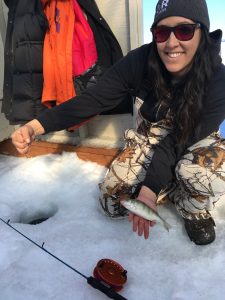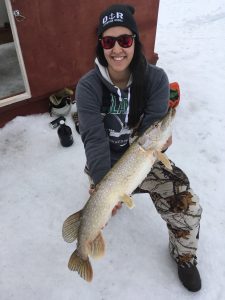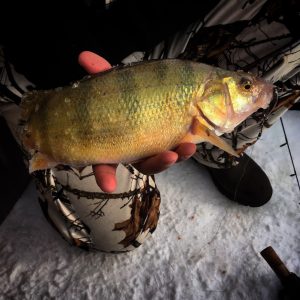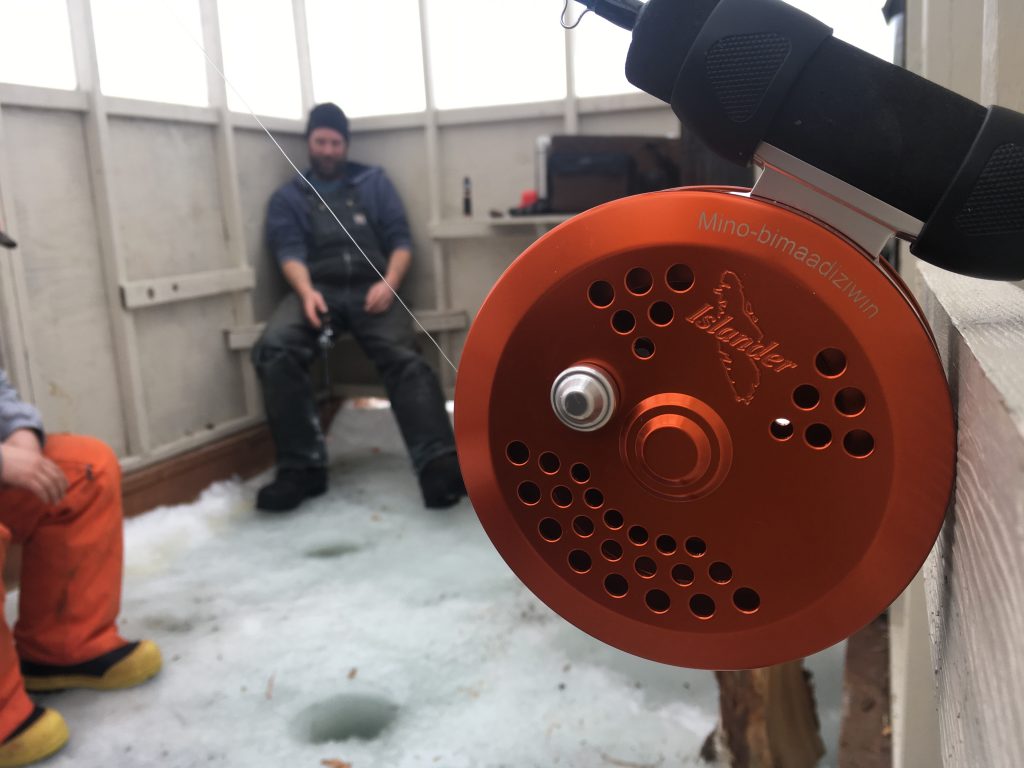Expert Advice
Hard Water Pinning
When someone mentions centerpin fishing, I can bet you a nickel that your mind goes straight to a beautiful day in the fall with salmon shooting up a river at record speed. Or perhaps your mind travels to a cloudy and rainy day with those rainbow coloured beauties that hide in pockets before traveling up river, dodging every spot of light along the river bank. I would say most don’t think of a crisp morning on the ice with air so cold it hurts to breathe.
 Centerpin reels have become my favorite outfit for hard water fishing. For years I had been overlooking this option because I assumed a single action reel wouldn’t be transferable over seasons. I am now aware of how wrong those assumptions were.
Centerpin reels have become my favorite outfit for hard water fishing. For years I had been overlooking this option because I assumed a single action reel wouldn’t be transferable over seasons. I am now aware of how wrong those assumptions were.
Like many anglers, I spend a great deal of time thinking about fishing, planning fishing trips in my mind, and living through memories when I cannot be on the ice. However, over the course of the winter I’ve had many opportunities to get on the ice with my Islander Steelheader and really focus on what makes it the ideal set up for targeting many species. After years of trying every style of reel on the market, I am sold on centerpin ice fishing and will never look back.
 There are a couple major differences about using a centerpin ice fishing that are game changing. One would be what I call free dropping. This is where you let your line out naturally and without the jerking of your line. You can use your palm to gently slow the line as it falls gracefully down the water column. Because the line comes off without any drag or resistance, it falls effortlessly—dancing if you will—teasing any fish that may be in the area.
There are a couple major differences about using a centerpin ice fishing that are game changing. One would be what I call free dropping. This is where you let your line out naturally and without the jerking of your line. You can use your palm to gently slow the line as it falls gracefully down the water column. Because the line comes off without any drag or resistance, it falls effortlessly—dancing if you will—teasing any fish that may be in the area.
I have found this to be extremely effective with plastics, such as tubes, worms or smaller spoons for pan fish. The days of feeding your line out with your hand are long over. This really changes up the presentation and will positively increase your success.
 For years, tip ups have been considered a great way to target pike and other larger fish. The ability to have a suspended baitfish or artificial bait hanging in the column seems to draw attention. The best part of a tip up is that the line doesn’t catch and set the hook – the fish free swims with the bait and it’s the anglers role to set the hook effectively. I have found this method can be used with a centerpin. The reel allows line to peel out when a fish grabs the hook and with a little piece of flagging tape, you can know when your line has been struck by a fish.
For years, tip ups have been considered a great way to target pike and other larger fish. The ability to have a suspended baitfish or artificial bait hanging in the column seems to draw attention. The best part of a tip up is that the line doesn’t catch and set the hook – the fish free swims with the bait and it’s the anglers role to set the hook effectively. I have found this method can be used with a centerpin. The reel allows line to peel out when a fish grabs the hook and with a little piece of flagging tape, you can know when your line has been struck by a fish.
Ice fishing is a great way to get outside during the winter and using a centerpin will really change your perspective on how to target fish. Not only will it provide a more engaging way to fish, but will also provide an instant surge of adrenaline when you hear the peeling of your line.
–Tamara Spence
Tamara Spence lives in Thunder Bay, Ontario where she is working on her Masters Degree at Lakehead University. When not in the books, she can be found enjoying the endless fishing opportunities that Northwestern Ontario and the Upper Midwest have to offer.


